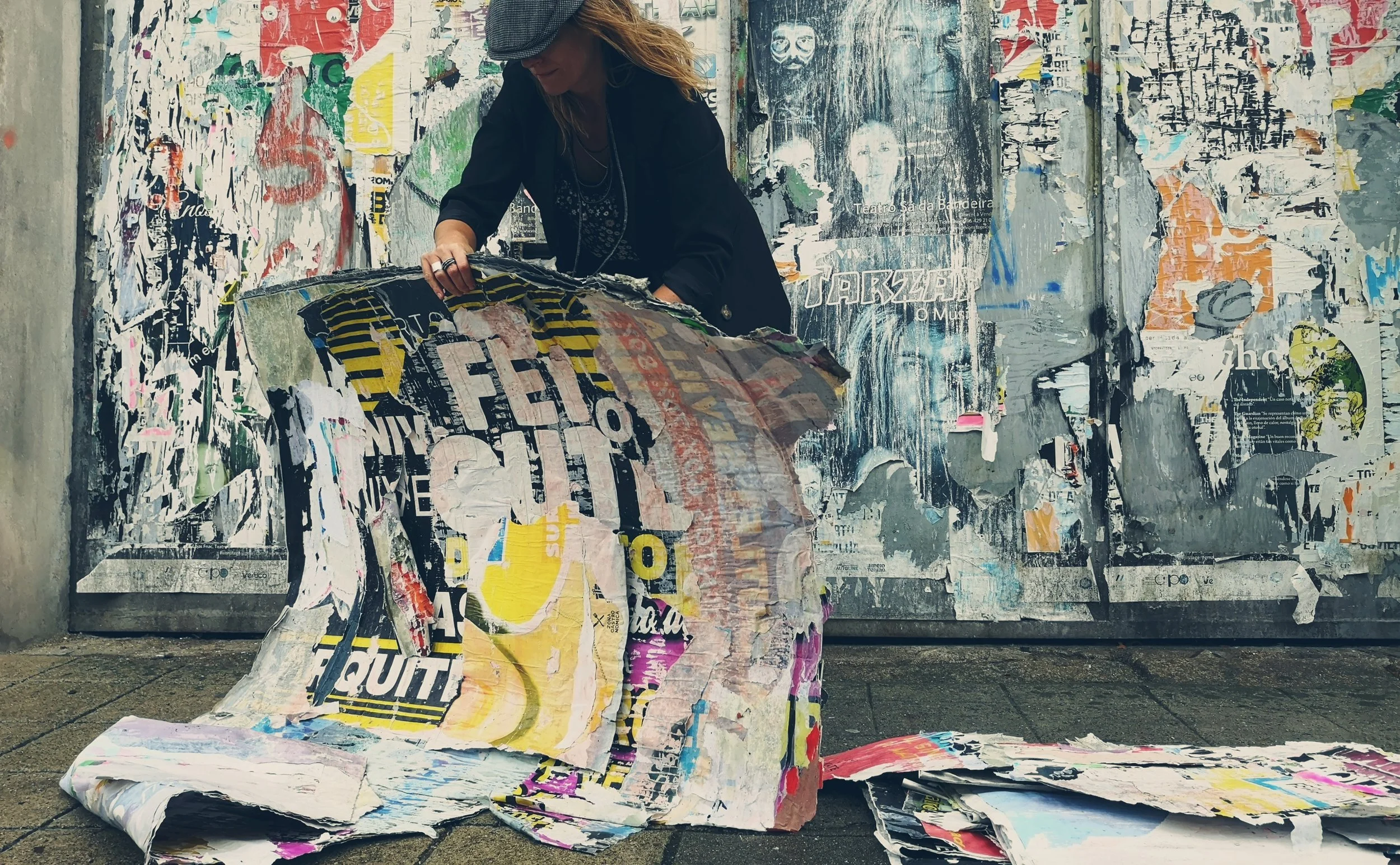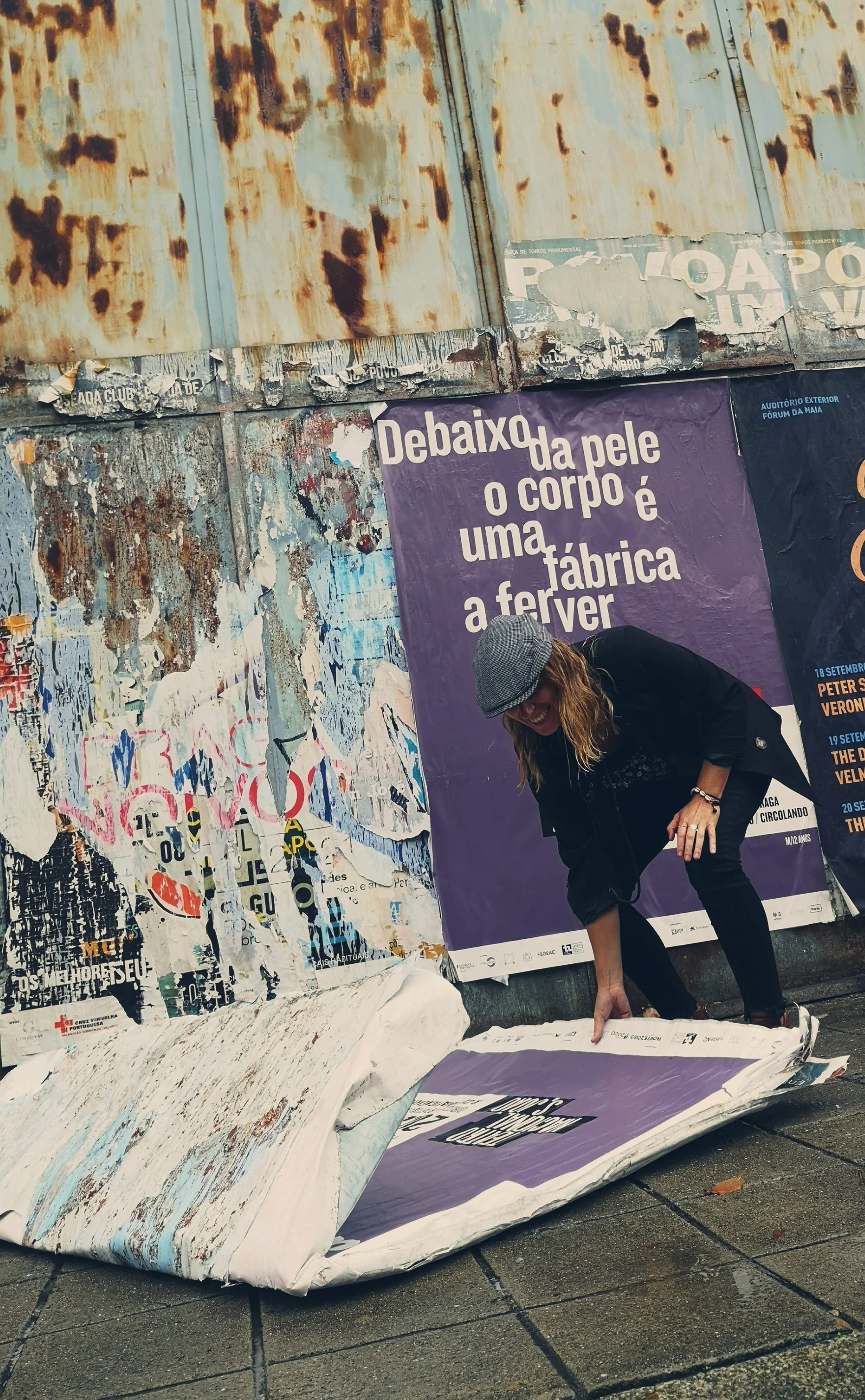OCT 20 | Manuela Pimentel [PT]
In 2020, Manuela Pimentel was part of our group show “Rite of Passage”.
Lisbon, Portugal 2020
Manuela Pimentel [PT]
(Porto, Portugal · 1979)
Manuela Pimentel’s work navigates the intersection between heritage and contemporaneity, where fragments of erudite historical culture meet the raw materiality of urban life. Drawing upon the traditional art of Portuguese tile-making and the language of street art, she constructs a visual dialogue that reflects the complexity of national identity while engaging in broader, global conversations on memory and transformation.
Her process begins in the streets, where she collects torn and timeworn posters — vestiges of a constantly changing urban landscape — and repurposes them as the foundation for her pictorial interventions. Upon these layered surfaces, she recreates the figures and motifs of Baroque azulejos, using acrylics to evoke their characteristic chromatic harmony and naive iconography. The integration of resins, rough mortars, and neon light further extends this dialogue, merging sacred and profane, permanence and ephemerality, refinement and decay.
Pimentel’s compositions embody a tension between what endures and what fades. By juxtaposing the canonical imagery of the azulejo with the visual noise of the street, she redefines the tile as a living and dynamic medium — no longer a decorative relic of local memory, but a site of resistance, ambiguity, and cultural reinvention. Her work thus captures a poetic dramaticism and quiet rationalism that invite reflection on the impermanence of matter and the persistence of collective identity.
Graduated in Plastic Arts from the Escola Superior Artística do Porto (2003), Manuela Pimentel’s practice spans painting, drawing, scenography, and video. She has been recognized with the ESAP Award (2004), the Servartes Painting Prize (2007), and the Public Vote Award of the Sovereign Portuguese Art Prize (2022). In 2024, the Portuguese National Tile Museum will dedicate a solo exhibition to her work, affirming her as a key figure in the reconfiguration of the azulejo within contemporary artistic discourse.








